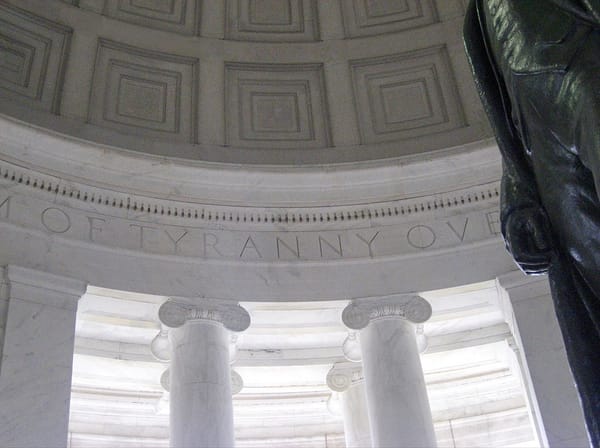The Government’s New Crackdown on Race in Education
The Trump Administration's first big salvo against the achievements of the Civil Rights Era.

“Dear Colleague,” the February 14 letter from the Department of Education Office for Civil Rights begins, “Discrimination on the basis of race, color, or national origin is illegal and morally reprehensible.” Who could disagree? But the letter quickly pivots to the bold claim that today’s “Educational institutions have toxically indoctrinated students with the false premise that the United States is built upon ‘systemic and structural racism,’” the result of which is that schools are waging an enormous discriminatory campaign “against students on the basis of race, including white and Asian students.”
The letter’s argument is, at its core, quite simple. It draws the entirety of its firepower from the recent Supreme Court decision in Students for Fair Admissions (SFFA) v. Harvard, claiming that “although SFFA addressed admissions decisions, the Supreme Court’s holding applies more broadly.”
At its core, the test is simple: If an educational institution treats a person of one race differently than it treats another person because of that person’s race, the educational institution violates the law. Federal law thus prohibits covered entities from using race in decisions pertaining to admissions, hiring, promotion, compensation, financial aid, scholarships, prizes, administrative support, discipline, housing, graduation ceremonies, and all other aspects of student, academic, and campus life. Put simply, educational institutions may neither separate or segregate students based on race, nor distribute benefits or burdens based on race.
But like the SFFA decision, it goes further than just the explicit use of race. “Although some programs may appear neutral on their face,” the letter goes on, “a closer look reveals that they are, in fact, motivated by racial considerations.” In a twisted inversion of Martin Luther King Jr.’s point that “Sometimes a law is just on its face and unjust in its application,” the OCR carves out a position that turns civil rights and anti-discrimination principles on their head.
It’s important to see the parallels in principle between what the Office for Civil Rights is saying and what King was arguing when he wrote that line. It’s true that neutral-sounding policies can, in practice, be applied selectively or, worse, discriminate against specific groups. The consequences of any given policy might disproportionately affect a particular group of people, even if the policy itself doesn’t explicitly name that group. To take just one example, the seemingly neutral requirement to require a photo ID in order to register to vote sounds all well and good until you actually drill down on the effects of such a policy and see who, exactly, is most prevented from voting by this policy (and, more to the point, who is often supporting such policies). I’ll give you one guess.
So King was pointing out that seemingly “neutral” policies and laws often provide white racists with plausible deniability. Now, the OCR argues that the same principle applies in reverse: so-called neutral policies in schools serve as a cover for racist DEI advocates discriminating against white people, giving more seats and consideration to minorities and historically disadvantaged groups. In short, the real racists now are those who run or support DEI initiatives. But the letter goes beyond banning explicit race-conscious policies, claiming that even indirect efforts to promote racial diversity—so-called “proxies for race”—must be eliminated. Of course, this simply vindicates people who see the boogeyman of DEI everywhere they look, further encouraging an unparalleled level of suspicion directed at any group, professor, or program on campus.
To make the point perfectly clear, King was concerned with laws that perpetuated systemic racism, while the OCR uses this logic to argue that DEI programs constitute discrimination against white and Asian students. This inversion totally distorts King’s argument, transforming an anti-racist critique into a justification for dismantling racial equity efforts.
As an example of “proxying” race, the letter uses getting rid of standardized testing in order to “achieve a desired racial balance or to increase racial diversity.” This example is instructive, because it clearly shows that enforcement will drop on any policy that someone else determines to be racially motivated, nevermind the near-impossibility of proving that it was racially motivated. The ambiguity is the point. If a university removes standardized testing and sees an increase in minority enrollment, will it be presumed guilty of racial engineering? This requires a level of mind-reading on a part of the investigating authorities that no one can be sanguine about. I imagine the skin color of the person being investigated will, for these investigations, go some way in determining whether race was being “proxied” or not.
Ironically, the letter’s intended chilling effect is tempered by its own neutral-sounding language. In requiring that all educational institutions not only cease “using race in decisions pertaining to admissions, … financial aid, scholarships, prizes, administrative support, discipline, housing, graduation ceremonies, and all other aspects of student, academic, and campus life” but also “cease all efforts to circumvent prohibitions on the use of race by relying on proxies or other indirect means to accomplish such ends,” the letter is no doubt going to have a massive chilling effect on college campuses.
Administrators and professors will ponder the contents of the letter—and their school policies if they align with the new guidelines—as they look at their syllabus or the charter for a new campus group and wonder if any given lesson plan or group violates it. Some, no doubt, will reach the conclusion that it may not be worth the investigation, the fight. The threat of getting funding pulled will loom like a dark cloud over higher education for the foreseeable future.
Education has always been a hotly contested battlefield in American politics, and we shouldn’t ignore the fact that the enemies of the achievements of the Civil Rights Era have now gone on the offensive—this is their first salvo and it will not be their last.




